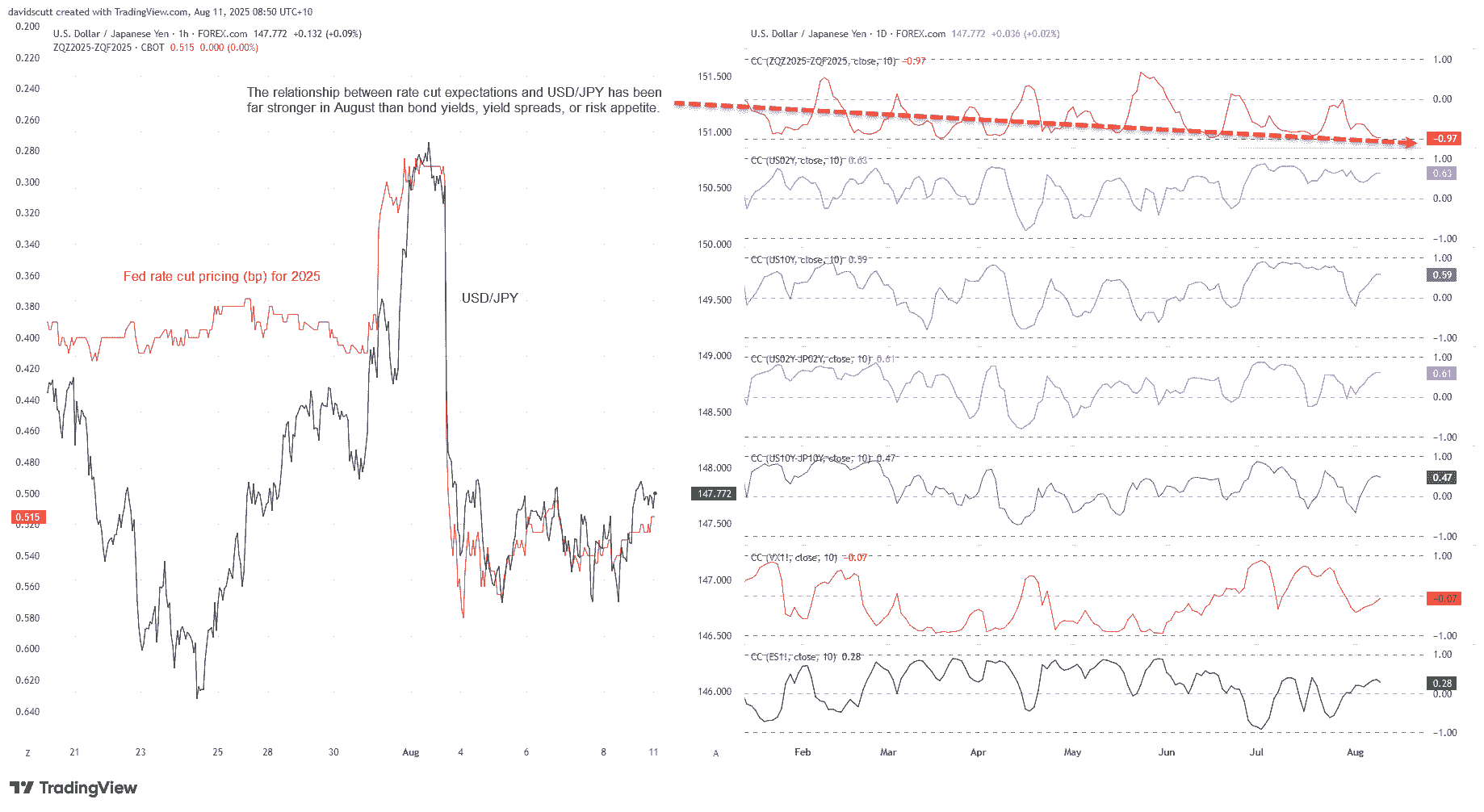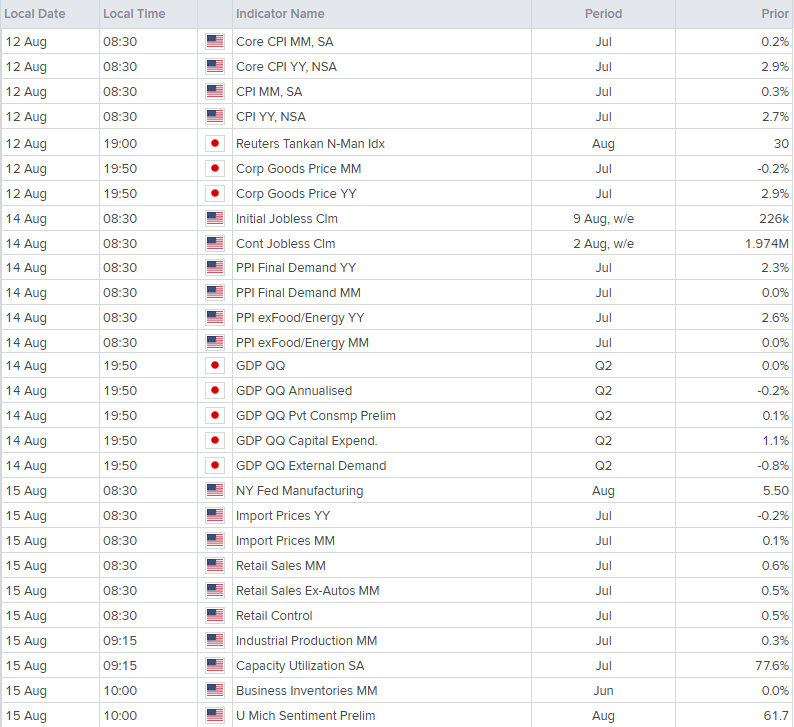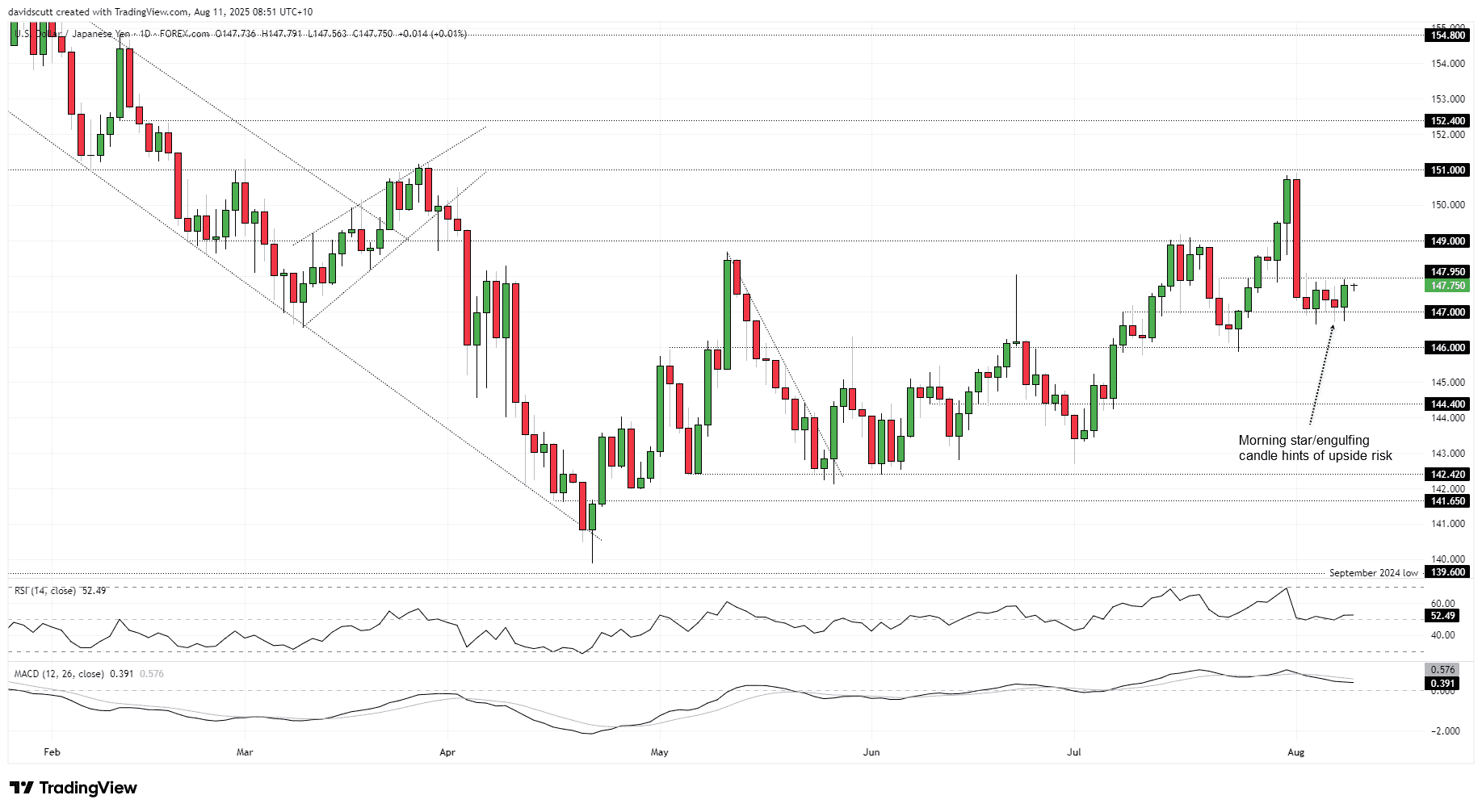United Homes Group stock plunges after Nikki Haley, directors resign
Fed rate cut expectations have been the primary driver of USD/JPY this month, making Tuesday’s US CPI report a potential catalyst for a break from the recent range.
- USD/JPY tied closely to Fed rate cut pricing in August.
- US CPI report the main known risk this week.
- Producer prices also key for Fed inflation gauge.
- Trump–Putin meeting could stir late-week volatility.
- Key levels: 147.00 support, 147.95 resistance.
USD/JPY Outlook Summary
Fed rate cut expectations have been steering USD/JPY more than moves in longer-dated yields or shifts in risk appetite this month, putting this week’s U.S. inflation reports firmly in the spotlight. With higher import tariffs starting to filter through and the risk of stronger inflation rising, the near-term bias tilts towards modest USD/JPY upside if its link to rate cut pricing holds. The charts tell a similar story.
Fed Rate Pricing Remains Dominant Driver
Source: TradingView
The relationship between 2025 Fed rate cut pricing and USD/JPY has been incredibly strong over the past fortnight, with a correlation coefficient of -0.97. As market rate cut expectations have swelled, as implied by futures, USD/JPY has tended to fall—and vice versa when the opposite occurred.
Over the same period, the relationship between USD/JPY and U.S. Treasury yields, along with yield spreads between the U.S. and Japan over both short and longer durations, has been nowhere near as strong. Nor has the relationship with the VIX or S&P futures been meaningful, suggesting that, for now, risk appetite is also playing second fiddle to shifts in sentiment towards the near-term outlook for U.S. rates.
Assuming there’s no significant change in these trends or an unexpected volatility event, it puts greater emphasis on this week’s U.S. inflation reports to drive USD/JPY direction.
U.S. CPI, PPI Headline Event Risk
The key economic and market events from both the United States and Japan are shown in the calendar below. U.S. ET shown.
Source: LSEG
Given its historic tendency to spark significant market volatility, Tuesday’s U.S. consumer price inflation report for July is undeniably the key known risk event on the data calendar. Headline inflation is seen lifting 0.2% over the month, down from 0.3% in June. Without revisions to prior data, that should see the annual rate lift a tenth to 2.8%.
For the key core figure, which excludes food and energy prices, a 0.3% increase is seen for the month. If correct, that would leave the annual rate at an uncomfortable 3%, up from 2.9% in June.
While focus on goods prices will garner much attention given the impact of higher tariff rates, don’t discount the message from services readings, which are often far more influenced by broader macroeconomic conditions, especially the labour market. If core services inflation, which excludes items such as shelter and energy services, comes in weak, that would help ease concerns that near-term inflationary effects from tariffs may become entrenched. The opposite would be true if services inflation is strong, of course.
Beyond the CPI update, Thursday’s producer price inflation report is also important as it will likely show what’s happening with upstream price pressures from tariffs, but also has several components that feed directly into the Federal Reserve’s preferred underlying inflation measure, the core PCE deflator.
U.S. import prices and retail sales on Friday, along with Japanese producer price inflation and GDP data on Wednesday and Friday respectively, are the other key events to watch on the data calendar.
The Federal Reserve speakers’ calendar looks relatively light at first glance, although traders should be on the lookout for unscheduled commentary throughout the week, especially after the CPI report on Tuesday. When it comes to those members who vote on interest rates this year, Schmid and Goolsbee are the ones to pay extra attention to.
Source: LSEG
Friday’s scheduled meeting between U.S. President Donald Trump and Russian President Vladimir Putin in Alaska is another key risk event that could spark volatility for USD/JPY late in the week. Given it remains unclear whether the meeting will include Ukrainian President Volodymyr Zelenskyy, expectations are understandably muted about a lasting outcome that will bring peace.
That also arguably points to asymmetric risks for risk appetite, and potentially USD/JPY given its role as a funding currency for carry trades, should a peace deal acceptable to both Russia and Ukraine be reached.
USD/JPY Rangebound with an Upward Tilt

Source: TradingView
USD/JPY was rangebound last week as market expectations for Fed rate cuts stabilised, with buyers emerging on dips beneath 147.00 and sellers capping moves ahead of resistance at 147.95. They’re the two initial levels for traders to watch.
Friday’s modest bounce helped complete a three-candle morning star pattern on the daily chart, hinting that directional risks may be starting to skew higher. However, having formed within a narrow range, the signal loses some of its significance. The same applies to momentum indicators such as RSI (14) and MACD, which are providing neutral readings despite sitting in marginally bullish territory.
Above 147.95 resistance, 149.00 and 151 are the levels to watch. A close beneath 147.00 support—not just an intraday probe—may see bears target a retest of 146.00 or even 144.40.
